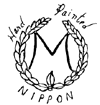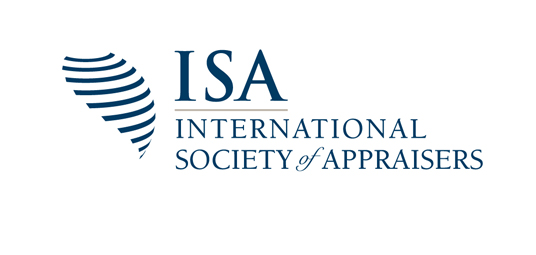VALUE REVIEW™
Published by Semler Appraisals & Estate Liquidations
A Professional Service for the Valuation of Personal Property
Spring, 2003 Vol. 5, No. 1
Protect Your Assets with Object Identification
The Getty Information Institute developed Object ID, an international standard for describing art, antiques and antiquities. While the primary purpose of Object ID is to facilitate the recovery of stolen works of art, it is useful in appraisals as well, to ensure adequate description of the appraised items.
There are four elements in the Object ID methodology:
- Take photographs
- Answer a checklist of questions
- Include a description of the item
- Keep it secure
Let’s take a closer look at each element:
Photographs: For high value items, photographs are vital for identification and recovery of stolen objects. An overall view, plus close-ups of unique characteristics, inscriptions, markings, and condition are important. Photographs are not as important in the appraisal of depreciable items, but images of groupings of items in a room and detail shots of the more significant items are still warranted.
Checklist Questions:
- Type of Object-Is it a desk, painting, Oriental rug?
- Materials and Techniques-Is it silver, wood, oil on canvas?
- Measurements-What is the size and/or weight of the object? What unit of measurement?
- Inscriptions & Markings-Are there any identifying markings, inscriptions, numbers, signatures on the property?
- Distinguishing Features-Are there any physical characteristics to help identify it, such as manufacturing defects, damage or repairs?
- Title-Does the object have a title (e.g., The Mona Lisa)?
- Subject-What is pictured or represented (e.g., man on a horse, a landscape)?
- Date-When was the object made (e.g., 2003, mid 18th Century, Ming Dynasty)?
- Maker-Who made the object (e.g., Radio Shack, Renoir)?
Description:
Include any additional information to help identify the object that is not covered with the checklist questions. Where was the item made, what is the shape, what is the color?
Security:
Once the documentation is complete, store this information in a safe place, such as a safe deposit box or fireproof safe.
The degree to which an item is described in an appraisal will vary with the type of property, the function of the appraisal, the needs of the client and the scope of the assignment.
Visit the Getty Information Institute website for more information about Object ID, www.object-id.com.
Made In — Dating Marks on Pottery and Porcelain
- Bone China: 1915 to present.
- ©: Used since 1914 on U.S. wares.
- Cooking Ware: 1923 to present.
- Copyright: 1858 to present.
- Craze Proof: 1960-1970.
- Detergent Proof: 1944 to present.
- Dishwasher Proof: 1955 to present.
- Made In …: 1887 and after.
- Made in Occupied Japan: 1945-1952.
- Nippon: 1891-1921.
- Oven Proof: After 1933.
- Patent Pending: 1940 to present.
- ® Used since 1940.
- Refrigerator Ware: 1938-1952.
- Union Label/Union Made: 1930s.


An Executor? Need Help? We can be of assistance!
When it’s time to settle an estate, the executor faces a maze of decisions. We can help!
Although well-established options are available to executors when disposing of cash and financial investments, this is rarely the case for managing an estate’s physical assets the home, other real property, furniture, equipment, personal effects and heirlooms. When executors are thrust into the role of settling estates, usually their biggest task is dealing with the many practical problems and challenges of these physical assets.
Services Include:
- Explaining the tradeoffs and best strategies to manage the sale of different types of physical assets in the estate.
- Helping to choose the best options and coordinating sales to maximize value to beneficiaries of the estate.
- Providing or connecting the executor with services for appraisals of real and personal property, real estate sales, estate (tag) sales or auctions, the cleaning, moving, packing, and storing of the personal property, and the security and safekeeping of the assets.
- Providing information, checklists and guidance to help the executor effectively discharge the duties of executor.
We adhere to a strict code of ethics governing conflict of interest, policy on referral fees, commission services, quality of outsourced services, commitment to the client’s success, and integrity in the role of advisor to the executor.
![]() Recently, we assisted an executor in Colorado with her parent’s estate in Dallas, by completing the appraisal of the personal property, coordinating the donation of bequeathed items, arranging for packing and delivery of family heirlooms, and then liquidating the remainder of the personal property. We made recommendations for a realtor, a locksmith, and a plumber.
Recently, we assisted an executor in Colorado with her parent’s estate in Dallas, by completing the appraisal of the personal property, coordinating the donation of bequeathed items, arranging for packing and delivery of family heirlooms, and then liquidating the remainder of the personal property. We made recommendations for a realtor, a locksmith, and a plumber.
Our Services
- Appraisals for probate/estate tax; equitable distribution among heirs; insurance coverage and claims; non-cash charitable contribution; distribution in marital dissolution; bankruptcy.
- Estate Liquidations by auction or tag sale.
- Litigation Support
- Lorrie Semler is a Certified Member of the International Society of Appraisers, specializing in Antiques & Residential Contents.
Thank YOU!
Your referrals are always welcome. Please let us know how we may better serve you.


![]()
![]()

NEXT ESTATE SALE
Get the Details on Our Next Estate Sale




